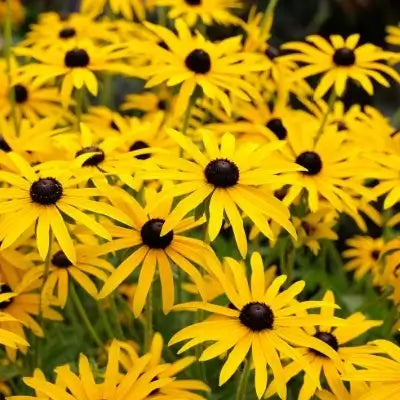10 Beautiful Low-Cost Flower Gardens to Create on a Budget
Introduction Creating a stunning flower garden doesn't have to break the bank. You can transform your outdoor space into a colorful and inviting oasis with creativity, thoughtful planning, and a few budget-friendly tips. In this article, we'll explore ten inspiring ideas for creating low-cost flower gardens that bring beauty and joy to your surroundings without straining your wallet.
Wildflower Meadow: Consider transforming a part of your yard into a wildflower meadow. Choose native wildflower seeds, which are more affordable and require less maintenance. Scatter the seeds over the designated area and let nature do its magic. Wildflower meadows not only add charm but also provide a habitat for pollinators.
Container Paradise: Embrace container gardening for its flexibility and cost-effectiveness. Reuse containers you already have, or source affordable ones from thrift stores or yard sales. Fill them with vibrant annuals or perennials for a burst of color. Group different-sized containers together for an eye-catching display.
Vertical Treasures: Vertical gardens are not only space-saving but can also be budget-friendly. Repurpose wooden pallets, old ladders, or rain gutters as vertical planters. Fill them with cascading flowers like petunias, ivy, or nasturtiums for a captivating display that adds height to your garden.
Seed Starting Adventure: Begin your gardening journey from scratch by starting plants from seeds. Seeds are significantly cheaper than mature plants. Create a simple indoor seed-starting setup using recycled containers and essential lighting. Nurture your seedlings until they're ready to be transplanted outdoors.
Divide and Conquer: Many perennial plants can be divided to create new plants. It not only helps you save money but also allows you to expand your garden. Hostas, daylilies, milkweed, creeping phlox, coneflower, and ornamental grasses are examples of plants that can be divided. Share extras with friends and neighbors for a budget-friendly plant exchange.
Edible Flower Haven: Combine beauty and functionality by creating an edible flower garden. Grow edible flowers like nasturtiums, calendula, and pansies, which add a pop of color and can be used to garnish salads and dishes. This approach adds value to your garden while keeping costs in check.
Foliage Focus: Flower gardens don't have to be all about blooms. Foliage can add texture and interest to your garden. Opt for plants with vibrant or variegated leaves. Heucheras, coleus, and hostas come in various colors and patterns, creating a visually appealing garden even without abundant flowers.
Rock and Roll: If you have rocky or uneven areas in your yard, turn them into charming rock gardens. Incorporate low-cost succulents, alpine plants, and drought-tolerant flowers. Rocks and pebbles serve as natural mulch, helping to conserve moisture and reduce maintenance costs.
Perennial Power:
Invest in perennial plants that return year after year, reducing the need to replant annually
Look for deals at local nurseries or online sales. Perennials pay off in the long run by providing ongoing beauty without the recurring costs of annual plants.
Community Effort: Consider starting a community seed and plant exchange in your neighborhood. It allows everyone to share excess seeds, cuttings, and plants, promoting community while expanding your garden variety at little to no cost. Create your garden art using materials like rocks, pebbles, and driftwood.
Painted stones, handmade wind chimes, and mosaic stepping stones add a personalized touch to your garden. b. Upcycled Accents Repurpose old furniture, such as chairs or ladders, into plant stands or trellises. These repurposed items can add a whimsy and character to your garden.
D.I.Y. Pathways
Craft pathways using inexpensive materials like gravel, recycled bricks, or even untreated wood rounds. These pathways guide visitors through your garden and add an inviting aspect to the space.
Conclusion A beautiful flower garden doesn't have to be a costly endeavor. By planning strategically, making the most of available resources, and incorporating your creative flair, you can create a budget-friendly garden that is as stunning as it is sustainable. Remember, the journey itself is as rewarding as the result, and every step you take towards cultivating your garden is a step towards creating a space of natural beauty and personal sanctuary.
Creating a beautiful flower garden on a budget is not only achievable but also a rewarding endeavor
You can design an outdoor space without overspending by embracing a mix of creative strategies such as wildflower meadows, container gardening, vertical planters, seed starting, and plant exchanges. Remember that gardening is a journey, and enjoying nurturing your garden adds immeasurable value to the beauty it brings to your surroundings.






























































